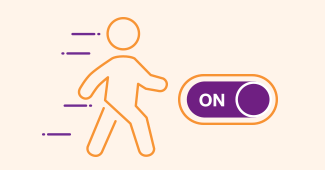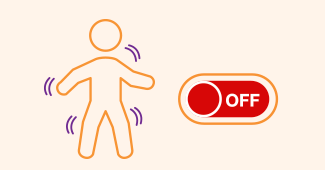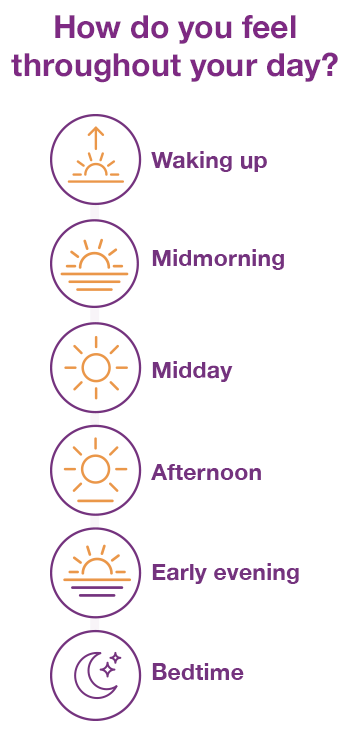What is ON and OFF time?

What is ON and OFF time?
During a typical day, you experience ON and OFF time1

ON time is when:
- Your Parkinson’s disease (PD) symptoms are at a minimum
- Your oral levodopa/carbidopa medication is working well
- You’re moving and able to go about your day

OFF time (or OFF episodes) is when:
- Your PD symptoms have re-emerged and are at or near their worst
- Your oral levodopa/carbidopa medication isn’t working well
- Symptoms like stiffness (rigitdity), freezing, shaking (tremor), slowness, cramping, difficulty moving, shuffling, low voice, and loss of facial expression re-emerge
What is GOOD ON time?
GOOD ON time is ON time when you don't experience troublesome dyskinesia. As you experience diminishing benefits of levodopa/carbidopa over time, it's important to have GOOD ON time each day.1-3
OFF time
ON time
with troublesome
dyskinesia
GOOD ON time
without troublesome
dyskinesia
- Troublesome dyskinesia is when uncontrollable (involuntary), abnormal movements interfere with your daily activities—even during ON time4
- These abnormal movements often occur as a side effect of long-term treatment with levodopa/carbidopa5
- Examples of dyskinesia include fidgeting, writhing and wriggling, head bobbing, and body swaying6
As you experience diminishing benefits of levodopa/carbidopa over time,
it's important to have GOOD ON time each day
What does your day with PD look like?
Now that you know more about ON time and OFF time, let’s see how well your current PD medication(s) are working for you throughout the day. XADAGO can increase your daily ON time without troublesome dyskinesia and can help reduce your OFF time.7
If you’ve felt OFF at any time above, talk to your doctor to see if XADAGO can help increase your daily ON time without troublesome dyskinesia.
NEXT: Why XADAGO?
Pay as little as $15* on your
next XADAGO prescription LEARN MORE
*Patients whose prescriptions will be paid for in part or in whole by Medicare, Medicaid, or any similar federal or state healthcare program, are not eligible for savings or rebates according to federal and state law.
The actual savings on your out-of-pocket costs for XADAGO will vary according to refill quantity, personal healthcare insurance coverage, and adherence to FDA dosing guidelines.
